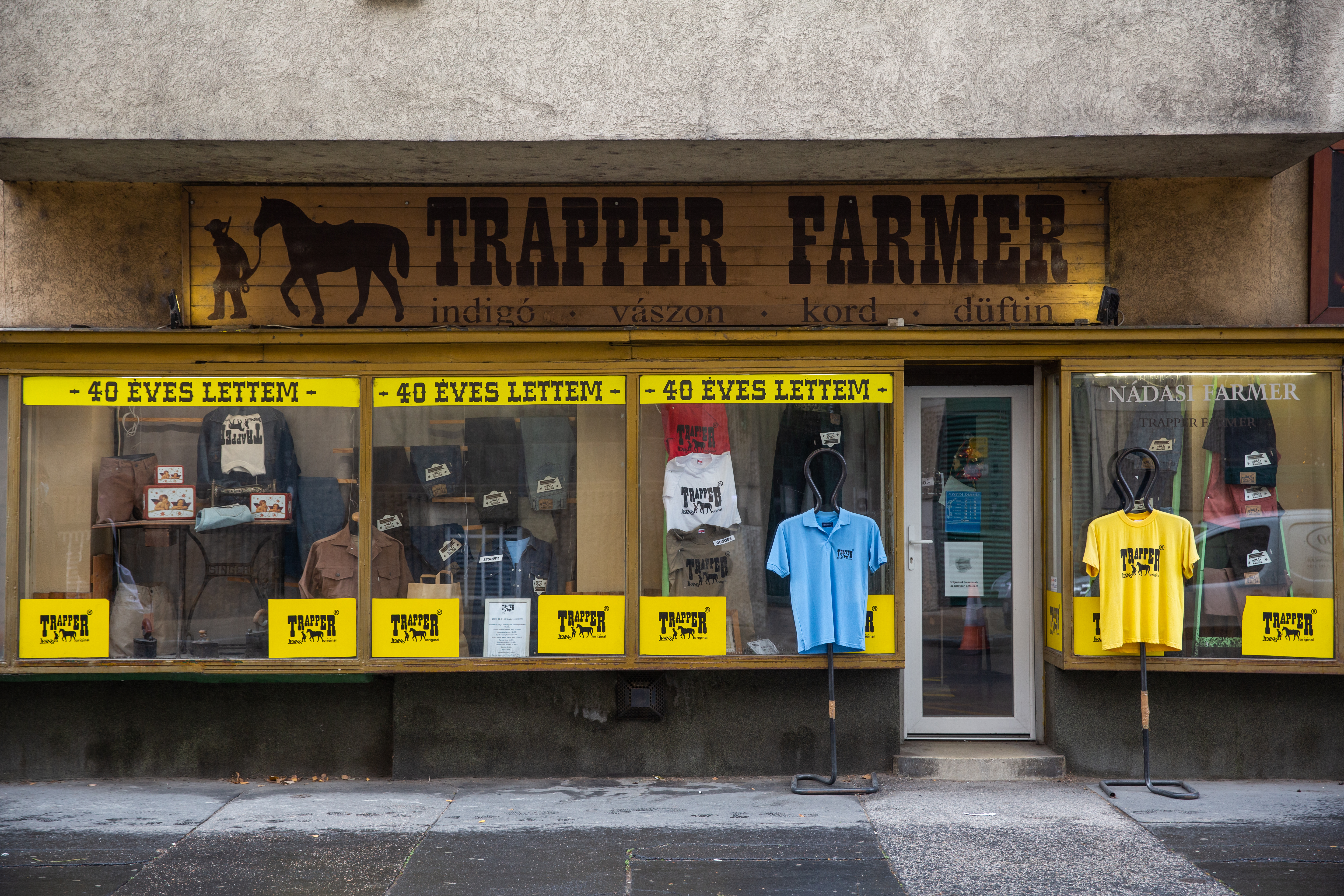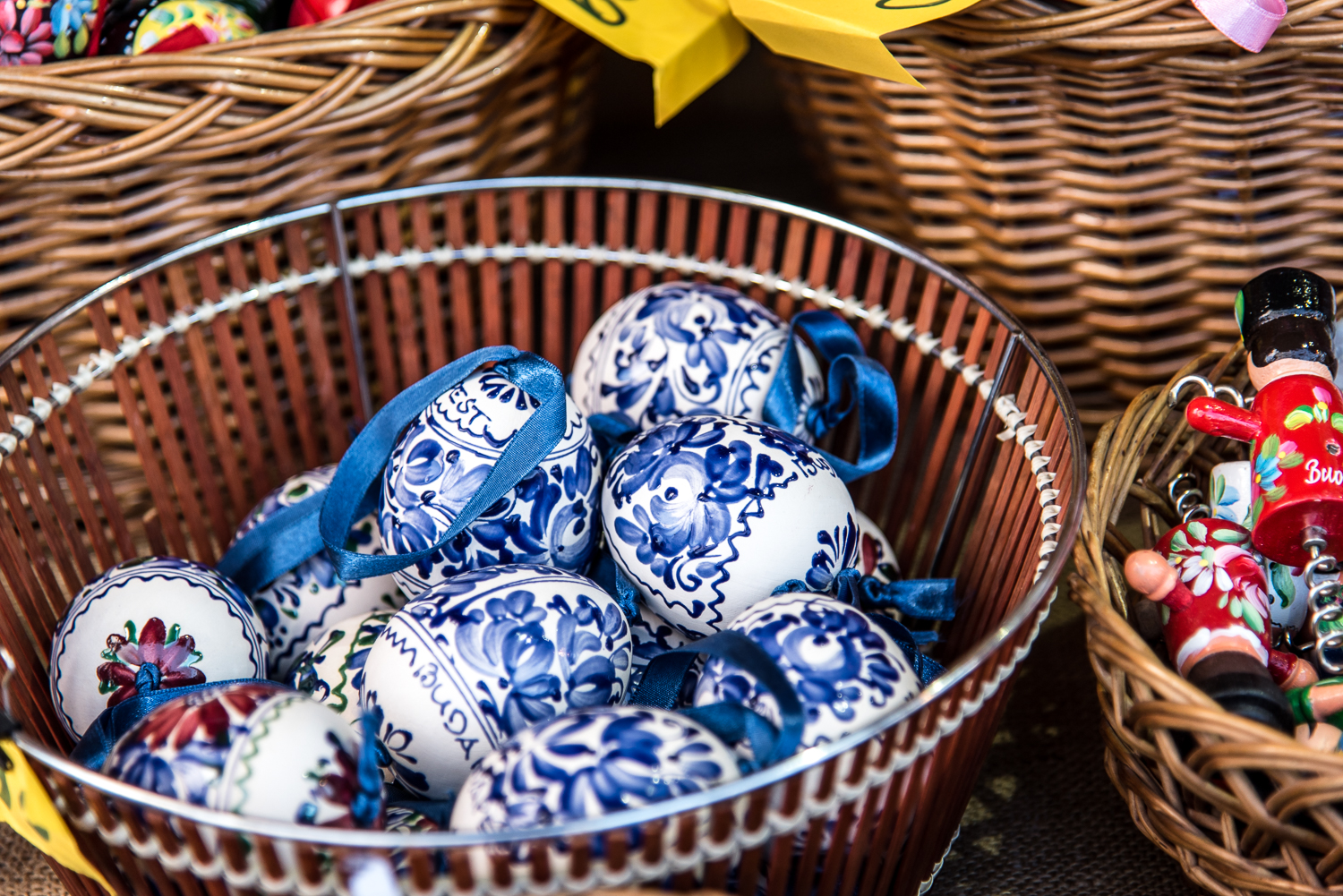
This year marks the 30th anniversary of the Trapper store run by Sándor Nádasi and his son on Fő utca, alongside Bem tér, Tarasz Sevcsenko tér, Szent Flórián’s Chapel and the Király baths. This wasn't, however, Sándor’s original career path. His education had nothing to do with Trapper jeans, or any jeans at all: he was a medical technician.
By the '70s, however, he was already the manager of the only jeans store in Budapest, which stood on Népköztársaság út (today's Andrássy út). Here you could choose from several types of imported trousers but, after a while, demand far exceeded supply, so something had to give. The solution was Hungarian jeans: Trapper.

One of the window-display arrangers in the shop was married to a man who worked at the Linen and Weaving Company, which at the time produced bedding and man-made fibre products. Sándor plied this connection, approached the factory's management and the result was a brilliant partnership. The company was soon producing an indigo fabric, which is nothing more than the raw material for jeans.


Home-grown jeans production started in earnest. They even announced a competition to name this new local product, with the winner getting 500 forints. The chosen option was Trapper – an English name to be sure, but the judges were confident that Hungarians would warm to it and, indeed, they did. Production began in 1978, with demand soon so overwhelming they were swamped, and had to outsource the sewing to smaller shops.

The pattern for the Hungarian jeans was actually copied from the lesser-known Swiss brand Bob, but using a thicker material than traditional Western jeans, resulting in a heavier but more durable product.
Meanwhile,
Sándor was approached by the EKISZ Clothing Co-operative, a group which ran five
stores across Budapest, from Széna tér to Rákóczi út. Soon the
jeans were a staple, selling for an affordable 600 forints each, as opposed to
Levi’s, which at the time went for around 980. (An average salary was 4,000-5,000 forints.)
On the counter of today's store on Fő utca, an original 1978 Trapper sits folded, while hanging on the
wall is one of the classic advertising billboards for the brand, gifted to the
store by the artist himself.

Trappers were immensely popular, in part because Hungarians were drawn to Western brands, and this domestic option somehow made this easier to obtain. Eventually, the régime change of 1989 transformed the business, and Sándor applied for the Trapper trademark four years after opening the first store.
Some
shoppers on Fő utca come from the older generation who might have bought their first Trapper jeans when the store opened. Next are the
middle-aged customers, who know the brand from their childhood.
Those who wore
Trappers in their heyday will recognise the jeans today, as the classic
patterns still dominate – although Sándor does listen to his son’s
suggestions for more modern influences. The new, narrow-legged Trapper style
attracts many young folks into the shop, although the attraction of a retro or vintage look is also strong.

Trapper
has even made a name for itself out of Hungary, gaining a sort of cult
following abroad – especially in former Socialist countries, such as Russia. Today some 20-30% of customers are foreigners. A guestbook
in the shop displays praise from Aussies and Kiwis.
The Trapper shop is
also recommended in publications stocked at hotels around Budapest,
and the current lack of tourism is felt even in this outlet for domestic jeans.

In the classic era of Hungarian jeans, Hungarian celebrities, actors, musicians and athletes, all came to Trapper to buy their jeans. One of the most famous customers was none other than Fidel Castro’s younger brother, Raúl, who popped in with his full bodyguard entourage. To this day, Sándor has kept the Cuban cigar which he received from Raúl as a gift.
Trapper Farmer
District I. Fő utca 92






